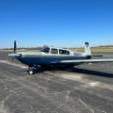Turbo leaning via EGT
-
Members Online
- Lincoln
- GeeBee
- Hank
- PT20J
- TCC
- FoxMike
- CCAS
- kortopates
- Marc_B
- bigmo
- larryb
- AH-1 Cobra Pilot
- Meshach
- RescueMunchkin
- PeytonM
- Bartman
- pkellercfii
- gacoon
- N204TA
- Shiroyuki
- Schllc
- Mikey30V
- Yariv
- Z W
- Hoeschen
- toto
- Slick Nick
- MoonFlyer68
- dkkim73
- Skyland
- varlajo
- ArtVandelay
- M20F
- KernalSanderz
- amillet
- mluvara
- patriot3300
- Sabremech
- Marvin Adams
- Nico1
- eman1200


Recommended Posts
Join the conversation
You can post now and register later. If you have an account, sign in now to post with your account.